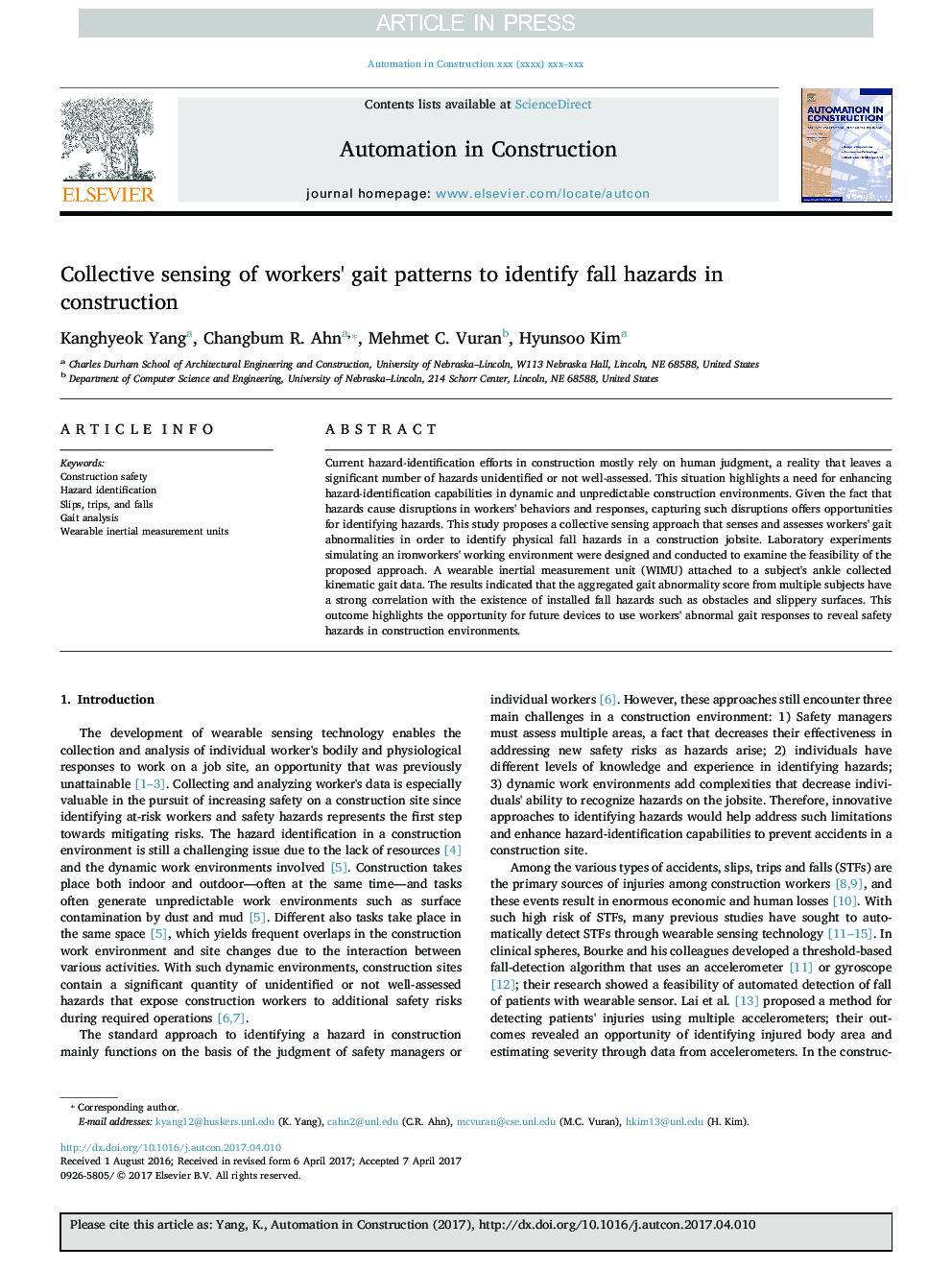| Article ID | Journal | Published Year | Pages | File Type |
|---|---|---|---|---|
| 4911201 | Automation in Construction | 2017 | 13 Pages |
Abstract
Current hazard-identification efforts in construction mostly rely on human judgment, a reality that leaves a significant number of hazards unidentified or not well-assessed. This situation highlights a need for enhancing hazard-identification capabilities in dynamic and unpredictable construction environments. Given the fact that hazards cause disruptions in workers' behaviors and responses, capturing such disruptions offers opportunities for identifying hazards. This study proposes a collective sensing approach that senses and assesses workers' gait abnormalities in order to identify physical fall hazards in a construction jobsite. Laboratory experiments simulating an ironworkers' working environment were designed and conducted to examine the feasibility of the proposed approach. A wearable inertial measurement unit (WIMU) attached to a subject's ankle collected kinematic gait data. The results indicated that the aggregated gait abnormality score from multiple subjects have a strong correlation with the existence of installed fall hazards such as obstacles and slippery surfaces. This outcome highlights the opportunity for future devices to use workers' abnormal gait responses to reveal safety hazards in construction environments.
Related Topics
Physical Sciences and Engineering
Engineering
Civil and Structural Engineering
Authors
Kanghyeok Yang, Changbum R. Ahn, Mehmet C. Vuran, Hyunsoo Kim,
